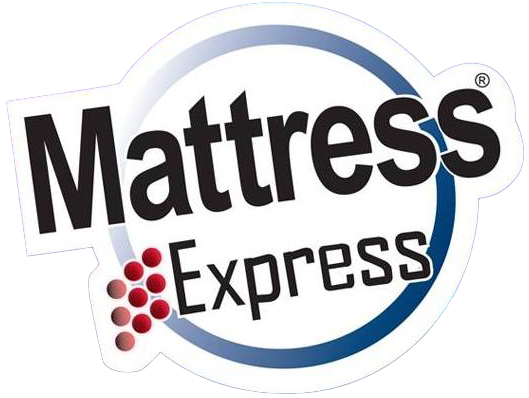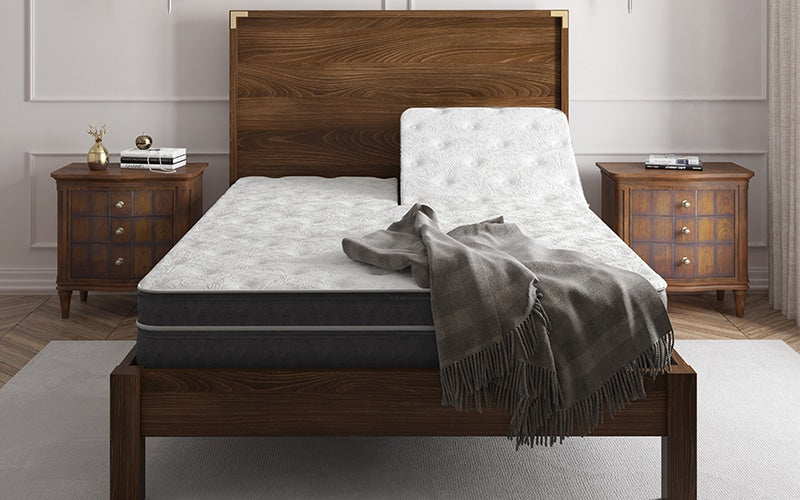
Your Best Mattress Guide
Which Mattress is Best for You?
-
Mattress Types
Learn MoreThere are many different types of mattresses and choosing which mattress type is best for you and your family can get confusing.
-
Mattress Sizes
Learn MoreWhen choosing a mattress size, the size of the person sleeping on the mattress and the size of the room the bed will live in, are very important.
-
Best Mattress for Side Sleepers
Learn MoreThe best mattress for side sleepers should make personal preference and your own body’s unique needs a priority.
-
Best Mattresses for Back Pain
Learn MoreFinding the best mattress for back pain is fundamental to restorative sleep which affects our overall health.
Personal Advice for a Personal Choice
What Mattress is Best for Me?
You see, one of the biggest misconceptions in finding that perfect mattress is assuming that there is a universal mattress.
The reality is that the best mattress is personal. It is a unique fit just for you; it should take some introspection and a discussion with a knowledgeable sleep specialist.
A trip to one of our many Mattress Express locations to speak with our associates will have you leaving enlightened, fulfilled and one step away from sleeping on your perfect mattress! In the meantime, let’s get you started with some information on mattress basics.
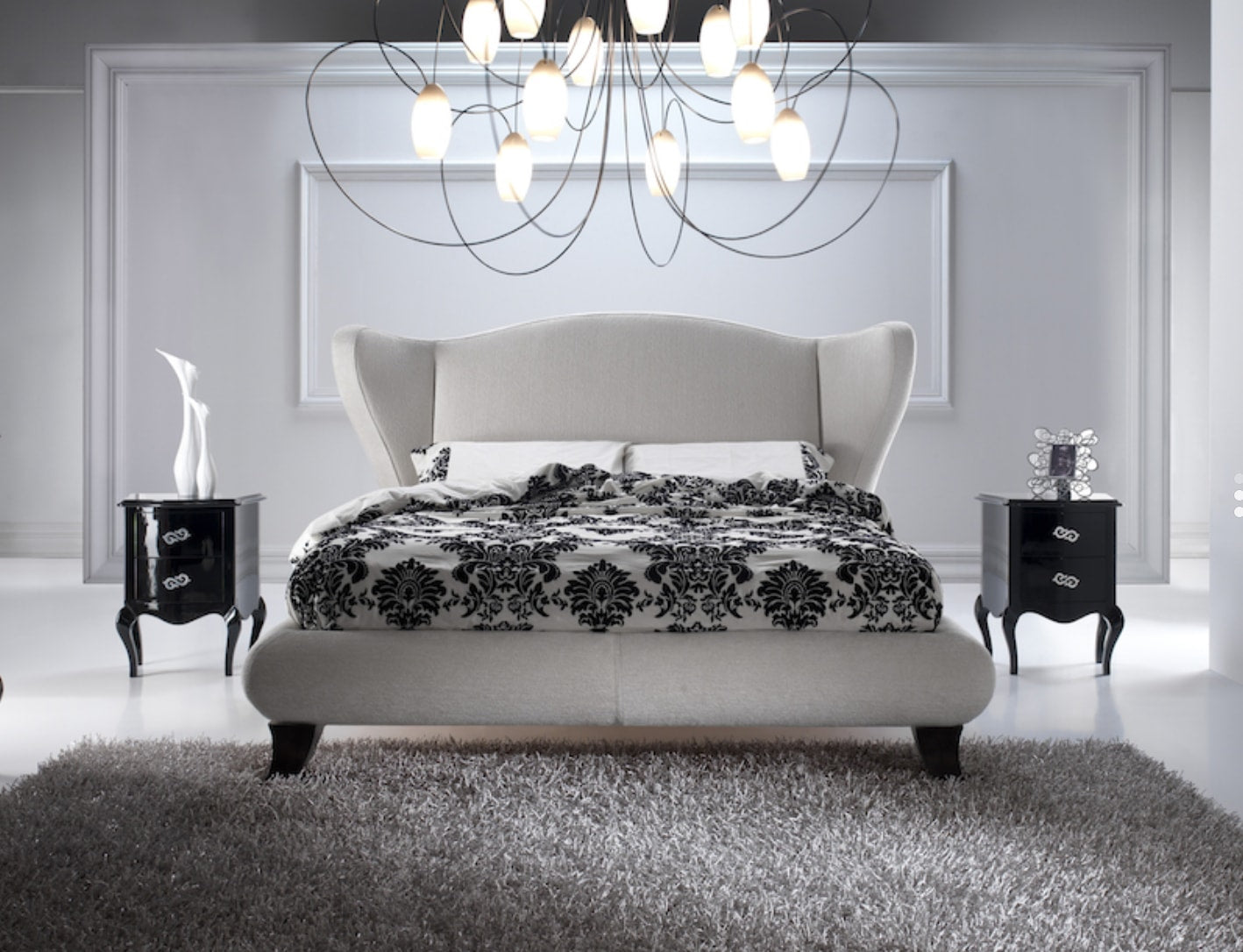
The Most Comfortable Mattress
Your definition of comfort is as unique as you are.. and choosing the right mattress can be very personal experience.
Mattresses come with several comfort ratings: Ultra Plush, Plush, Medium, Firm, and Ultra Firm. These comfort level designations are very helpful and convenient for shopping – however, it’s always best to consider exactly what plush and firm means to you.
At Mattress Express, we know comfort means finding the mattress, bedding, pillows and price point that lets you rest easy each and every night.
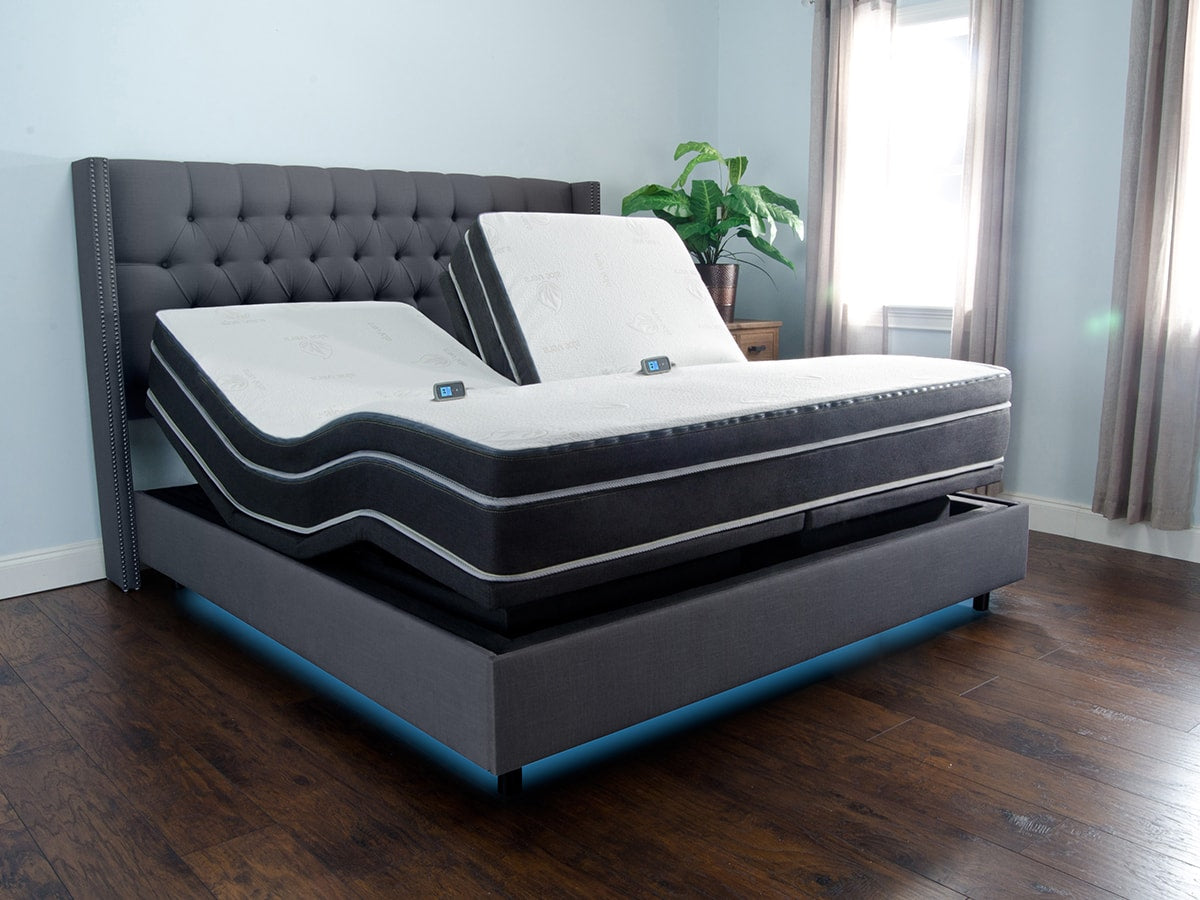
The Best Type of Mattress
There are many different types of mattresses and choosing which mattress type is best for you and your family can get confusing.
Not to worry! Generally, the type of mattress that is right for you depends on your personal preferences, specific health requirements, and understanding how structural and comfort layer materials come together to provide you with the support and restorative relaxation that your body needs to re-energize each night.
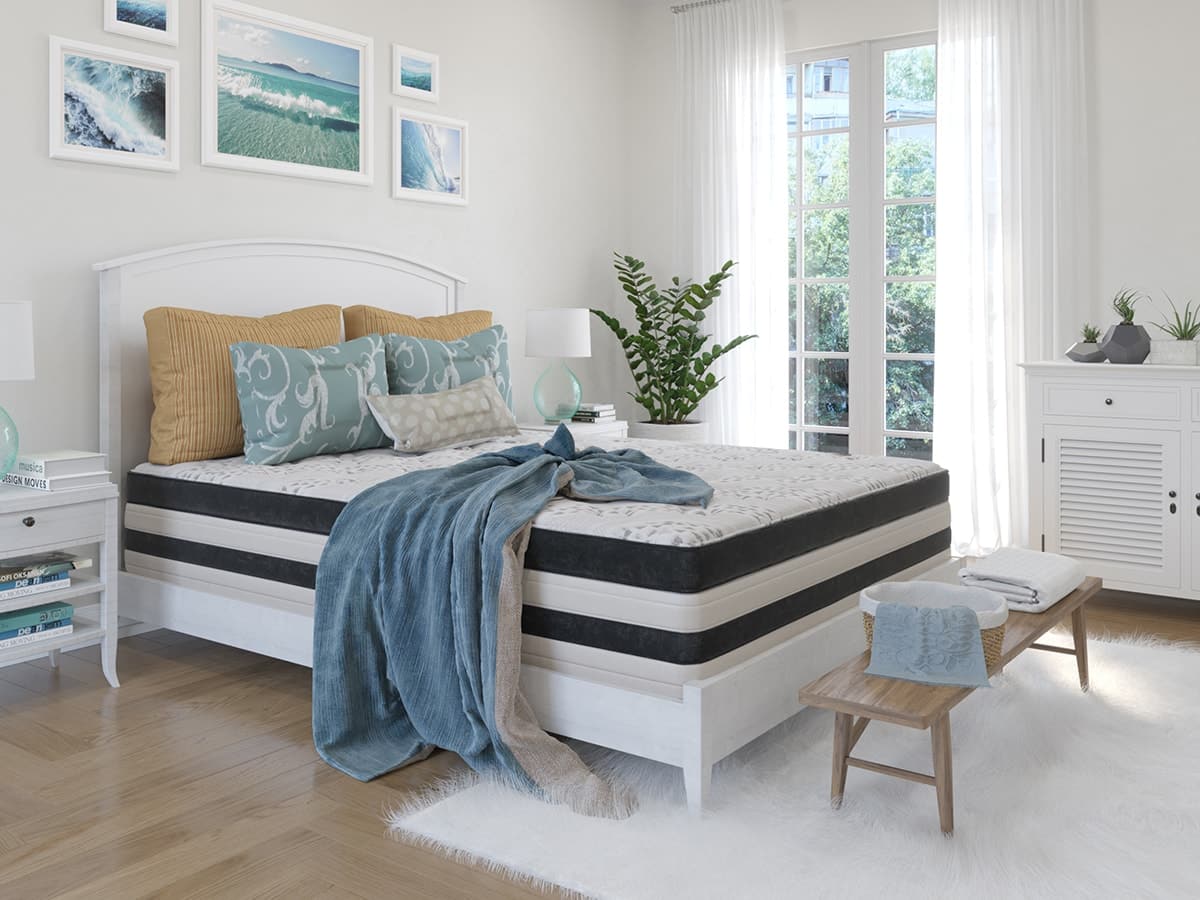
The Best Mattress Size
Generally most consumers know what size mattress they are interested in purchasing. There are standards, of course, that have been in place for some time. However, before you make up your mind, it's good to know there are some small variations available that may make all the difference to a sleeper's comfort as well as working nicely in the living space of the bedroom.
Did you know, for example, that you can get a Full size bed in an XL length? Or, did you know that a California King bed is longer than a King but not quite as wide? Interesting right?! The important thing is that you buy the mattress that is just right for you – and that should include the right size.
Quality Over Affordability
Let’s think about this for a second. Just like everything in your life, we must be focused on the goal, followed by the method (cough cough, price) to achieve that goal.
For example, when you buy a vehicle as a single, responsibility-free person, you know your goal is to get to work and to get home… maybe to go to a few parties on the weekends. However, if you’re a soccer parent and have to use your vehicle as a caravan for rambunctious and sweaty teenagers three times a week for most of the year, neither an expensive BMW nor an eco-friendly Prius will cut it. Even though you love the features and the name recognition of the BMW, or, the price point and smaller carbon footprint of the Prius, neither of those are the your best choice for your needs.
If we use the example above as an analogy for our sleep, we realize that the goal of your mattress is to provide continually-supportive, comfortable and health-elevating sleep. If the goal is for a mattress to be supportive, comfortable and to elevate your health, then your best mattress has to be one that is fine-tuned for your needs, not just something flashy or something super inexpensive (unless, of course, those traits work toward or beyond your goal). At Mattress Express, you’ll find many mattresses that meet or even exceed your expectations, making the price of a perfect night’s sleep well worth it.
On The Hunt for Your Most Comfortable Mattress
Since an integral component of anyone’s perfect mattress has to do with comfort, we need to forget everything our mind is telling us about what we think we need (at least for this part).
Comfort is an emotional response, a reaction to our unique physical reality. Following inaccurate stereotypic claims of yesteryear (such as “a firm mattress is the best for you” or “pillowtops all sag in the middle”) must be ignored and forgotten. Comfort is an unique, individual response to you, and you alone. So how do we test our “comfort?”
What’s Comfort to You?
The best way to examine how your body feels is to start by laying flat on your back on a mattress.
When you’re on your back, your body weight is distributed most evenly and your spine is directly in contact with the mattress. With this weight distribution and spine-to-mattress contact, we are best able to feel the support within the mattress. Close your eyes and run your mind down your back, focusing on your vertebrae and your bones. Your upper body and the small of your back should all feel supported by this mattress while you’re on your back. It might be hard to discern, but once you try another mattress to compare, you’ll be able to identify which mattress supports you best while on your back. The best way to find your perfect fit is to try an assortment of mattresses at your nearest Mattress Express store.
A Plush or Firm Mattress?
Since the majority of people sleep on their sides, the next test is truly looking for comfort.
When you rotate onto your side, you’re looking for comfort of two things: the transition from back-to-side, and most importantly, how your body feels when you’ve rotated to your side. When we rotate to our side, we shift all of our body weight around; gravity becomes more of a burden and causes our bodies to weigh us down, pushing our bodies (hips and shoulders in particular) deeper into the mattress. Simply due to this fact alone, a firm mattress may not work for people – in fact, a plush mattress (soft mattress) can be beneficial at providing additional comfort for side sleepers by providing pressure relief from the support system of the mattress.
On your side, you’re focusing on your hips, core and shoulders. Do you feel a lot of pressure in your hips? The mattress may be too hard, especially if you are a side sleeper. Do you feel pressure in your shoulders? Ask your sleep specialist to change your pillow out for a thicker loft. A supportive pillow is just as important as the mattress for your best sleep. If this change doesn’t minimize or eliminate the pressure in your shoulder, the mattress is probably too hard for your needs. Inversely, if you’re sinking in too much, you may be feeling pressure on the parts of the body not in contact with your mattress. This is due to the part of your body in contact with the mattress not receiving enough support.
Your Bed’s Benefits – Muscle Relaxation, Pressure Relief and Focusing on your Health
Once you’ve found a mattress that feels comfortable and supportive, we now need to consider the health benefits of this mattress.
Luckily, many health benefits are delivered from accessories and support systems underneath the mattress, so all your hard work spent finding the right mattress was worth it! Consider this: say you have a car. What’s supporting the car? Well, aside from the framework, it’s the tires, right? They’re holding up the frame and are what constantly are working to get you from point A to point B. What happens if one of the tires has significant air loss? Your mileage per gallon of gas is going to decrease, because that support system isn’t strong. Not only that, it will make your car more prone to breaking down and developing other systemic issues.
Pairing Your Mattress with a Frame
So, what sort of health benefits can a mattress support system and mattress accessories give us?
If you have any lower back pain or achy muscles, or if you snore, have sleep apnea, or wear a PAP machine, there are incredible benefits in upgrading your support system from a plain old frame and foundation (that’s the upgraded word for “boxspring”) to an adjustable base. Here at Mattress Express, we offer numerous foundations to match your mattress and your needs, but for sure the adjustable base is one of our most popular. Seriously, don’t take my word for it: lay on your back on a mattress with an adjustable base and ask your sleep specialist to raise your feet. Focus on your lower back.
You will be amazed with the immediacy of the pressure relief your body achieves! What about when your sleep specialist raises your head? Now, your body isn’t fighting gravity to breathe – you can breathe clearer and minimize some of the negatives of various sleep disorders. This can alleviate conditions that cause snoring too – no more rolling over to smack your significant other in the middle of the night! Some adjustable bases have a massage option, which is great for relaxation purposes and for allowing your muscles to open up and breathe before you go to sleep. You can even lay on your side while elevated – in fact, due to the pressure relieving properties of an adjustable base, you should be sleeping slightly elevated with both your upper body and lower body, and it’s comfortable and healthy to do so on your back or on your side.
Beneficial Accessories
Lastly, consider various pillows and mattress protector accessories in your purchase. A pillow is important for your body type and how you choose to sleep: on your side, on your back or even on your stomach.
A pillow constitutes 25% of your sleep surface – think about it, your shoulders, neck and head are essentially being supported by a mattress on top of your mattress! If you aren’t sure if a pillow matters, be sure to try out heavier, loftier pillows along with slim pillows and latex pillows to compare to memory foam pillows. A pillow, being a mattress for your head, is going to be a unique fit for you – just like the mattress! You’ll notice the different support your neck and shoulders receive from various pillows and will want to pair your new mattress purchase with the appropriate pillow accessory. You can get or order these and more accessories at any one of our Mattress Express locations, just let our associates know what best suits you and we’ll find you the best of everything you need.
Other accessories that are great for your health are mattress protectors. Sleep specialist stores often sell protectors that are both breathable and waterproof, allowing for air to pass through but preventing your mattress from getting dirty, stained or soiled.
Some protectors have amazing phase-change material that does some neat things with heat, and others have specialized covers that actually feel and sleep cold! Most mattress protectors often have antimicrobial properties and prevent dust mites from finding a home in your mattress. Dust mites are microscopic bugs that live in dust; dead skin cells that we shed daily accumulate in areas of high use, like our beds, so if you don’t have a protective covering that dust and those dead skin cells will find their way into your mattress, and the dust mites will follow. These little bugs aren’t the worst critters around, but a dust mite allergy is certainly annoying at the least. Allergies to dust mites can produce heavy breathing, wheezing along with symptoms that make you seem like you have the common cold. Prevent those bugs from finding a home by washing your mattress protector and bedding often – and of course, by having a mattress protector in the first place.
Come to Mattress Express
So in summary, finding your perfect mattress isn’t something you should do from clicking on a one-size-fits-all mattress on the internet.
Finding your perfect mattress is a combination of your intuition and a discussion with a knowledgeable sleep specialist, with a focus on support, comfort and health. There’s no sense in purchasing something that isn’t going to check all three of those boxes, and trust me when I say that all sleep specialists and mattress sales associates want you to be happy with whatever you purchase. Whether it’s a couple hundred dollars, a few thousand or even more than that, you deserve to have a great mattress, a comfortable mattress that will support you and provide a healthy night’s sleep. Make that third of your life that you spend in bed worth it, your body will thank you. To try out an assortment of mattresses at different firmness and plush levels, come to one of our Mattress Express locations and speak with our friendly and knowledgeable associates!
